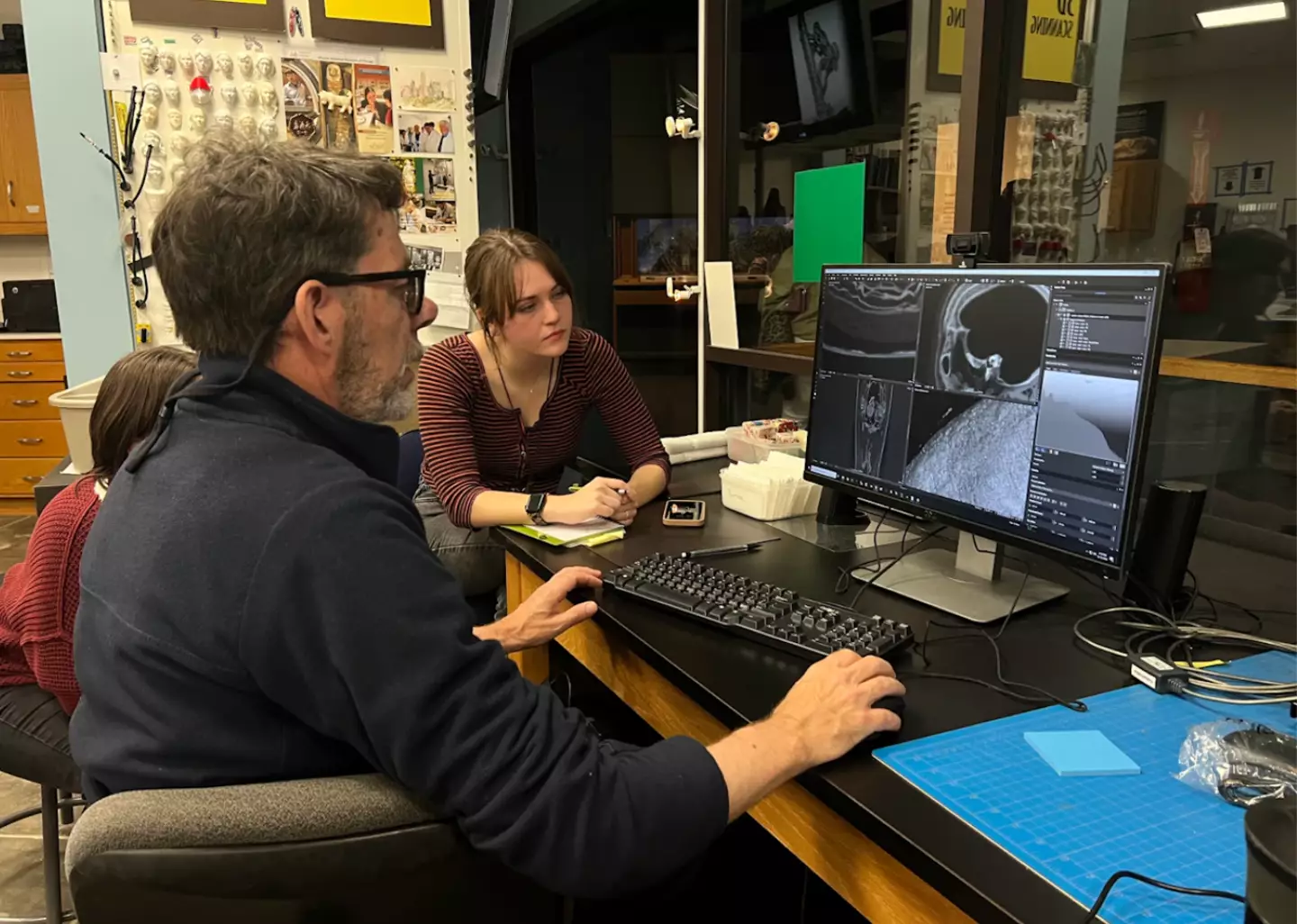“Unlocking the Past: Revolutionary X-ray Reveals Secrets of Ancient Egyptian Mummy’s Enigmatic Lock!”
Imagine popping open a coffin from 3,000 years ago, only to discover it has no entry point! Sounds like the plot of a wacky horror film, right? But that’s the curious case of Lady Chenet-aa, an ancient Egyptian aristocrat whose “locked-mummy mystery” has baffled archaeologists for ages. Thanks to innovative X-ray scans conducted at the Chicago Field Museum, we’re finally peeling back the layers—literally. Researchers recently examined 26 ancient mummies, and the insights revealed about their lives and burial practices are mind-boggling. What did they find about the intriguing Lady Chenet-aa’s remains that have kept historians scratching their heads? Join me as we explore this captivating ancient riddle and unlock some secrets of the past! LEARN MORE.
New X-ray scans have revealed the mystery surrounding a famous ancient Egyptian mummy that was placed in a coffin that had no real entry point.
The bizarre 3,000-year-old mystery may finally have been solved after new CT scans at the Chicago Field Museum took place recently, with scientists being given new, fresh perspectives on some aspects in history.
Things such as lives and deaths of people in ancient Egypt and mortuary practices have been explored, as the four-day long study, which saw 26 ancient Egyptian mummies put through a CT scanner, involved thousands of X-rays that gave researchers a look behind the wrappings.

Over two dozen mummies were scanned (Chicago Field Museum)
Stacy Drake, the Human Remains Collection Manager at the Field Museum, explained: “From an archeological perspective, it is incredibly rare that you get to investigate or view history from the perspective of a single individual.
“This is a really great way for us to look at who these people were – not just the stuff that they made and the stories that we have concocted about them, but the actual individuals that were living at this time.”
One of the mummies in particular stole the headlines: aristocrat Lady Chenet-aa, the most popular of about a dozen mummies at the museum.

The X-ray scans revealed something shocking about Lady Chenet-aa’s remains (Chicago Field Museum)
Her strange burial procedure has made her situation stand out, as her body looked like it was enclosed in a paper maché-type box that showed no hints of a seam.
Several researchers have been left confused over how her remains were inside, labelling it a ‘locked-mummy mystery’, but it looks like new CT X-ray scans have revealed what has helped to preserve Chenet-aa’s remains for three millennia.
“You can start to see that there’s a seam going down the back and some lacing,” JP Brown, a senior conservator of anthropology at the Field Museum explained.
Scans showed that the mummy was stood upright, though when the coffin was softened with humidity, it became flexible to mould around the body.
Researchers said that they discovered a slit that was made at the back from head to foot, which opened up, as the wrapped body was lowered down into the coffin.
This slit was then closed as a seam and wood panel pegged in at the feet kept everything together after all this time.
It was also revealed that the aristocrat was in her 30s or early 40s when she died thousands of years ago.

New CT scan technology tells scientists more about mummies than ever before (Chicago Field Museum)
Other details found were that she lost several teeth as some of the food she ate had grains of sand in it, which were tough on the enamel.
In the coffin itself, her mummified remains also had fake eyes put in her sockets, as the ancient Egyptians believed that this meant that eyes would go with her to the afterlife.
Dr Brown added: “The Ancient Egyptian view of the afterlife is similar to our ideas about retirement savings. It’s something you prepare for, put money aside for all the way through your life, and hope you’ve got enough at the end to really enjoy yourself.
“The additions are very literal. If you want eyes, then there needs to be physical eyes, or at least some physical allusion to eyes.”












